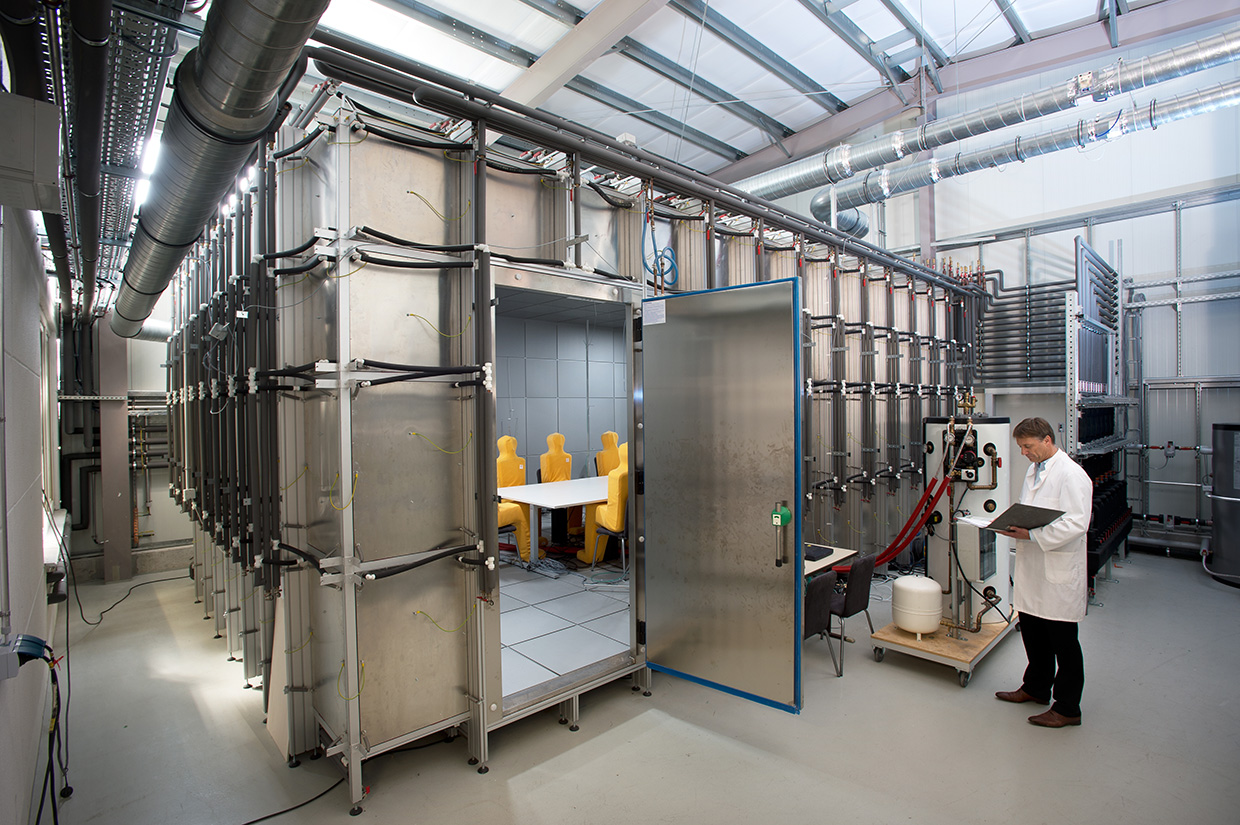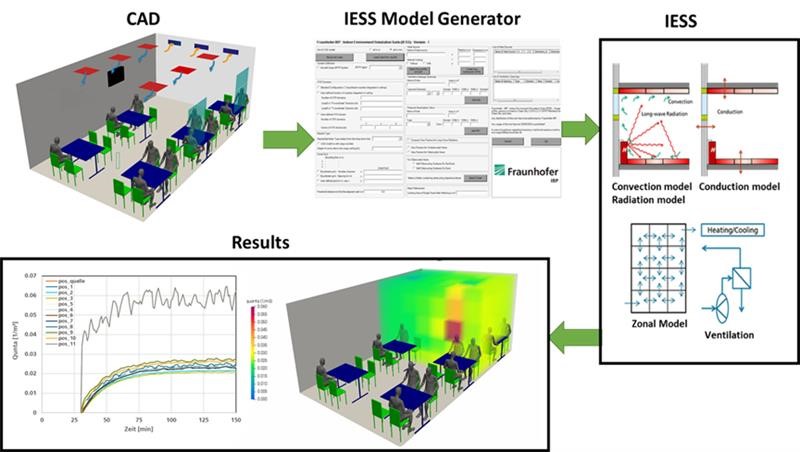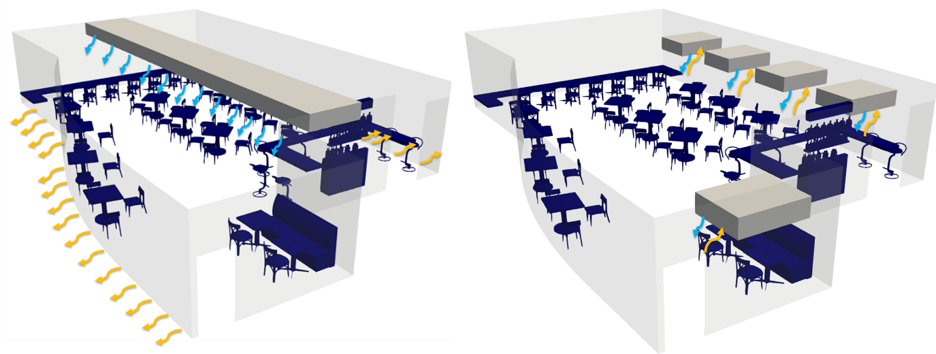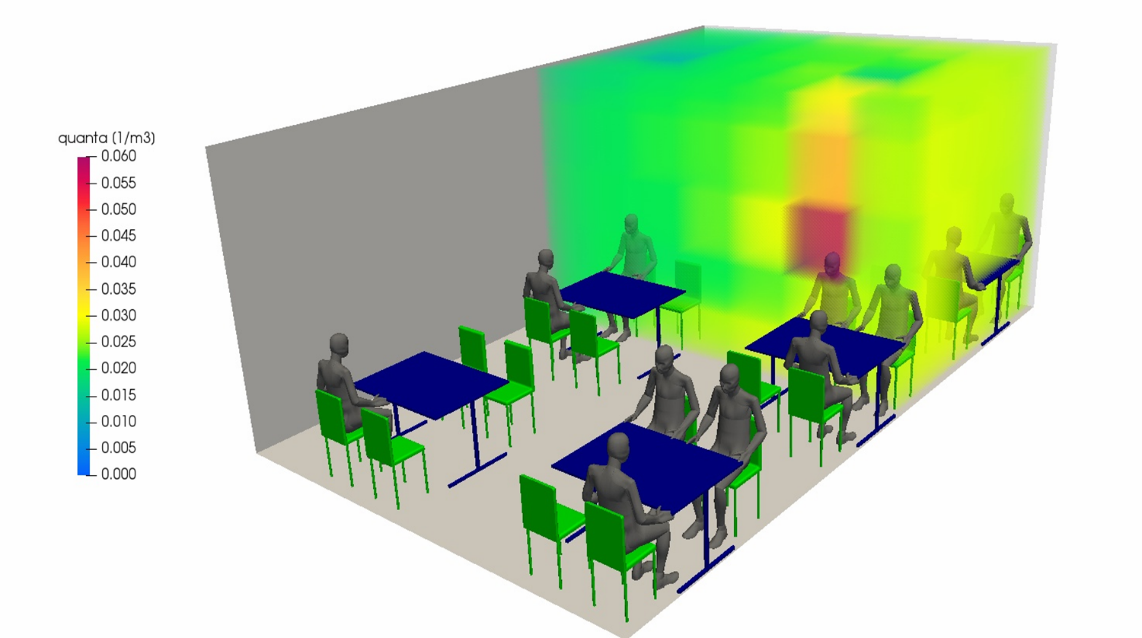Gastronomy, the hotel industry, the event industry, and "suppliers" such as breweries, caterers or exhibition booth builders are suffering greatly from the measures required to contain the SARS-CoV-2 pandemic. Within the scope of the "Hy4HoGa" project, ways to reduce the risk of infection via aerosols in the hospitality industry, and thus how large, highly-frequented spaces can be used safely at affordable cost, is being investigated by Fraunhofer IBP in collaboration with the Bavarian hotel and restaurant association "Bayerischer Hotel- und Gaststättenverband DEHOGA Bayern e.V." and the Bavarian industry association "vbw - Vereinigung der Bayerischen Wirtschaft e. V."
Hy4HoGa – Hygiene concepts for large spaces in hotels and restaurants
Project goals
The target is to develop new solutions for reducing the viral load in the air or to adapt existing ones from other areas that can be implemented quickly at low cost and without the need for major construction work. In the course of the project, recommendations and prototypical hygiene concepts will be developed for various room types - from bars and pubs to event and conference rooms. In addition, the project aims to contribute to better standardization based on a reliable, scientific structure.
Project procedure
In the filter test setup and model room at Fraunhofer IBP’s “Indoor Air Test Center”, the researchers used Covid-19 surrogate viruses to assess the effectiveness and suitability of selected air purification technologies (e.g. HEPA class filters, UV and plasma disinfection, etc.) in typical scenarios. Besides determining efficiency and degradation rates, any by-products formed are analyzed to evaluate their impact on indoor air quality. Additional simulations of air and aerosol propagation make it possible to identify suitable installation sites and/or the number of devices required. The data from the experiments will be implemented to validate simulation models that can be used to calculate other typical scenarios in the hospitality industry.
The tests with Covid-19 surrogate viruses and measurements on air purification technologies show: not only the already-known separation by HEPA filters reduces the virus load if the air flow rate is adequate. Technologies such as UV-C, ionization, and ozone air purification also contribute to reducing Covid-19 surrogate viruses. The project investigated the magnitudes of possible inactivation and potential by-products that may be generated (such as ozone). In addition, the project aims at deriving useful and feasible recommendations for action from the results.
In this way, air purification technologies could be included as a supplementary building block in operational hygiene concepts, if required. Wherever normal ventilation is not sufficient, air purification technologies - either mobile or integrated into ventilation systems - are an additional option to reduce the viral load.
Research results
The air purification technologies evaluated (e.g., filters, UVC irradiation, ionization/plasma, or ozone addition) are capable of removing or inactivating Covid-19 viruses without generating relevant amounts of undesirable harmful byproducts.
However, certain quality criteria must be met. Fraunhofer IBP has worked these out in its scientific study.
The risk of infection is noticeably reduced by decreasing the viral load: depending on the technology, the researchers demonstrated a reduction in viral concentrations of up to 99 percent during operation over a two-hour period. The project also formulates requirements for indoor air purifiers (airflow, cleaning efficiency, noise emission, product safety, operation and maintenance) and where they need to be installed in order to reduce the risk of infection. This confirms that ventilating indoor spaces efficiently significantly contributes to reducing the likelihood of infection.
Project partners
- Bayerischer Hotel- und Gaststättenverband DEHOGA Bayern e.V.
- vbw – Vereinigung der Bayerischen Wirtschaft e.V.



